SYSTEM DESCRIPTION USB AUDIO SYSTEM FUNCTION OUTLINE (a) The stereo jack adapter assembly is equipped with a USB connector. Connecting a USB device or "iPod" to the stereo jack adapter assembly allows music files to be played. Not only is it possible to play music from a USB device with audio functions, it is also possible to play MP3, WMA, AAC, WAV (LPCM), FLAC, ALAC or OGG Vorbis music files that are stored on a USB device. In addition, "iPod" control software is installed, allowing file selection from playlists and operation using shuffle mode. HINT: Operation through the controls of a USB device or "iPod" cannot be performed while it is connected. (b) USB audio system compatible devices (1) USB device The following device formats can be used:
MP3, WMA, AAC, WAV (LPCM), FLAC, ALAC or OGG Vorbis files written to a USB device with any format other than those listed above may not be played correctly, and their names and folder names may not be displayed correctly. Items related to standards and limitations are as follows:
(2) "iPod" "iPhone", "iPod", "iPod classic", "iPod nano" and "iPod touch" are trademarks of Apple Inc., registered in the U.S. and other countries. The following "iPod", "iPod nano", "iPod classic", "iPod touch" and "iPhone" devices can be used with this system. Made for:
HINT:
USB VIDEO SYSTEM FUNCTION OUTLINE (a) Playable video file standards
HIGH-RESOLUTION SOUND SOURCE OUTLINE (a) This device supports high-resolution sound sources. (b) The definition of high-resolution is based on the standards of groups such as the CTA (Consumer Technology Association). (c) The following formats and media can be used:
FILE INFORMATION OUTLINE (a) Playable MP3 file standards
(b) Playable WMA file standards
(c) Playable AAC file standards
(d) Playable WAV (LPCM) file standards*
(e) Playable FLAC file standards*
(f) Playable ALAC file standards*
(g) Playable OGG Vorbis file standards*
(h) ID3 tag, WMA tag, AAC tag, TAG and Vorbis comment (1) Additional text information called an ID3 tag can be input to MP3 files. Information such as song titles and artist names can be stored. HINT: This player is compatible with ID3 tags of ID3 Ver. 1.0 and 1.1, and ID3 Ver. 2.2 and 2.3. (Number of characters complies with ID3 Ver. 1.0 and 1.1, ID3 Ver. 2.2 and 2.3) (2) Additional text information called a WMA tag can be input to WMA files. Information such as song titles and artist names can be stored. (3) Additional text information called an AAC tag can be input to AAC files. Information such as song titles and artist names can be stored. (4) Additional text information called a TAG can be input to WAV (LPCM), FLAC, ALAC files. Information such as song titles and artist names can be stored. (5) Additional text information called a Vorbis comment can be input to OGG Vorbis files. Information such as song titles and artist names can be stored. (i) Usable media (1) USB devices can be used to play MP3/WMA/AAC/WAV (LPCM)/FLAC/ALAC/OGG Vorbis files. (j) Usable media format (1) Standards and restrictions
(k) File names (1) Only files with an extension of ".mp3", ".wma", ".m4a", ".wav", ".flac", ".alac", ".ogg" and ".oga" can be recognized and played as MP3, WMA, AAC, WAV (LPCM), FLAC, ALAC or OGG Vorbis files. (2) Save MP3, WMA, AAC, WAV (LPCM), FLAC, ALAC or OGG Vorbis files with an extension of ".mp3", ".wma", ".m4a", ".wav", ".flac", ".alac", ".ogg" or ".oga". NOTICE: If non-MP3, non-WMA, non-AAC, non-WAV (LPCM), non-FLAC, non-ALAC or non-OGG Vorbis files are saved with an extension of ".mp3", ".wma", ".m4a", ".wav", ".flac", ".alac", ".ogg" or ".oga", those files may be wrongly recognized as MP3, WMA, AAC, WAV (LPCM), FLAC, ALAC or OGG Vorbis files and played. A loud noise may occur and damage to the speakers may result. "Bluetooth" OUTLINE 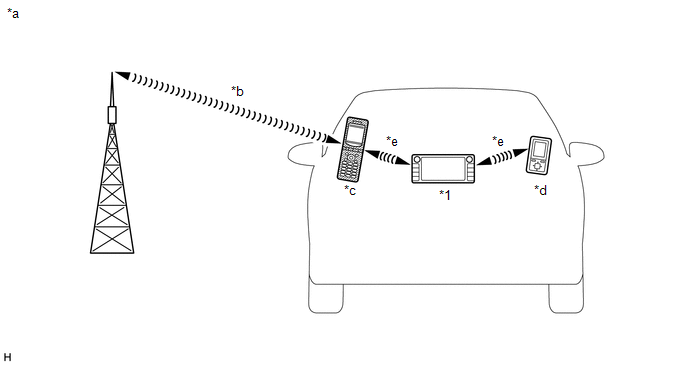
(a) "Bluetooth" is a trademark owned by Bluetooth SIG, Inc. (b) "Bluetooth" is a wireless connection technology that uses the 2.4 GHz frequency band. HINT: The communication performance of "Bluetooth" may vary depending on obstructions or radio wave conditions between communication devices, electromagnetic radiation, communication device sensitivity or antenna capacity. (c) Hands-free function (1) The "Bluetooth" built-in radio and display receiver assembly and a "Bluetooth" compatible cellular phone* can be connected using a "Bluetooth" wireless connection. This enables the use of the hands-free function on the cellular phone even if the phone is in a pocket or bag. For this reason, it is not necessary to use a connector or cable to connect the cellular phone. *: Some versions of "Bluetooth" compatible cellular phones may not function properly. (2) The hands-free function uses a "Bluetooth" wireless connection. A "Bluetooth" wireless connection can be affected by uncertain elements, such as vehicle location, time of day, etc. Therefore, problems related to establishing connection may be caused temporarily by "Bluetooth" connection conditions. It is necessary to check the frequency of occurrence, connection conditions using another cellular phone, etc. when performing diagnosis. (3) Compatible hands-free devices
HINT:
(d) "Bluetooth" audio function (1) The "Bluetooth" built-in radio and display receiver assembly and a "Bluetooth" compatible portable audio player* can be connected using a "Bluetooth" wireless connection. This enables files stored in the portable audio player to be heard from the vehicle speakers. In addition, operations such as play/stop can be performed directly from the radio and display receiver assembly. *: Some versions of "Bluetooth" compatible audio players may not be able to be connected via the "Bluetooth" function, or music may play, but functions available using the radio and display receiver assembly may be limited. (2) Compatible "Bluetooth" audio devices
RADIO DESCRIPTION (a) Radio frequency band (1) Radio broadcasts use the radio frequency bands shown in the table below. 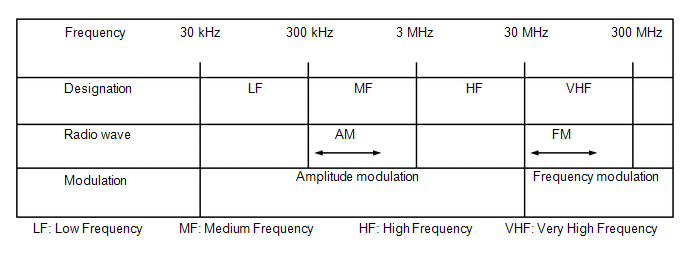 (b) Service area (1) The service areas of AM and FM broadcasts are vastly different. Sometimes an AM broadcast can be received very clearly but an FM stereo broadcast cannot. FM stereo has the smallest service area, and is prone to pick up static and other types of interference such as noise. 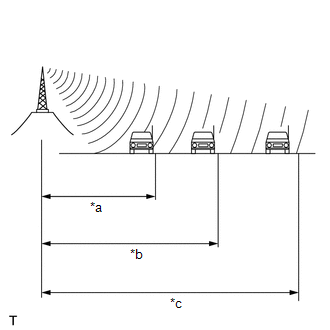
(c) Radio reception problems HINT: In addition to static, other problems such as "phasing", "multipath" and "fade out" exist. These problems are not caused by electrical noise, but by the radio signal propagation method itself. (1) Phasing AM broadcasts are susceptible to electrical interference and another kind of interference called phasing. Occurring only at night, phasing is the interference created when a vehicle receives 2 radio wave signals from the same transmitter. One signal is reflected off the ionosphere and the other signal is received directly from the transmitter. 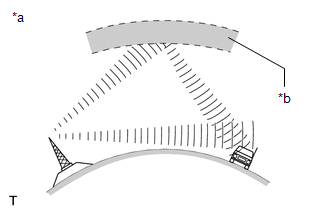
(2) Multipath Multipath is a type of interference created when a vehicle receives 2 radio wave signals from the same transmitter. One signal is reflected off buildings or mountains and the other signal is received directly from the transmitter. 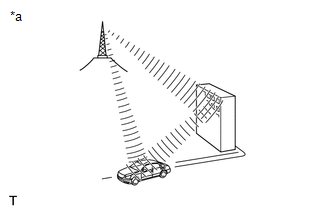
(3) Fade out Fade out is caused by objects (buildings, mountains and other large obstructions) that deflect part of a signal, resulting in a weaker signal when the object is between the transmitter and vehicle. High frequency radio waves, such as FM broadcasts, are easily deflected by obstructions. Low frequency radio waves, such as AM broadcasts, are less likely to be deflected. 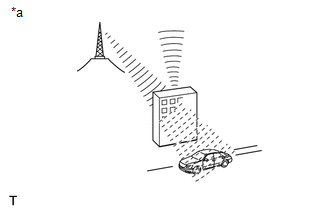
(d) Noise problem Technicians must have a clear understanding about each customer's noise complaint. Use the following table to diagnose noise problems.
"HD Radio" FUNCTION OUTLINE (w/ HD Radio Function) (a) The "HD Radio" system is a radio system that broadcasts in the IBOC (In-Band On-Channel) form that the iBiquity Co. has developed. By expanding the bandwidth per channel of conventional FM/AM bands, digital audio and data signals are additionally transmitted. "HD Radio" technology is manufactured under license from iBiquity Digital Corporation. U.S. and Foreign Patents. "HD Radio" and the HD and HD Radio logos are proprietary trademarks of iBiquity Digital Corporation. SiriusXM FUNCTION OUTLINE (w/ SXM Function) (a) SiriusXM (SXM) satellite radio is a satellite digital radio broadcast provided by SiriusXM Radio Inc. The broadcast (pay-type) is performed through satellites and terrestrial repeater networks. Several unique channels are available, and even if a vehicle changes locations, the same information can be received without breaks. Information such as song names, broadcast station names, etc. can be received. NOTICE: To receive pay-type broadcasts, the customer must enter into a pay-type contract with SiriusXM Satellite Radio Inc. After entering into a contract, registration of the Radio ID is necessary. Also, if parts are replaced, the Radio ID must be re-registered. HINT: When disconnecting the cable from the negative (-) battery terminal, the broadcast station logo data will be initialized. It takes a while for the broadcast station logo data to be updated to the latest data. VEHICLE CUSTOMIZATION OUTLINE (a) Customization of functions can also be performed on the multi-display screen. Refer to Owner's Manual for further information on customizable items for the audio and visual system. HINT:
AUTOMATIC SOUND LEVELIZER (ASL) FUNCTION OUTLINE (a) The Automatic Sound Levelizer (ASL) function automatically adjusts the audio system volume in order to compensate for increased vehicle noise (vehicle noise tends to increase as vehicle speed increases). The ASL adjusts the volume based upon vehicle speed signals sent from the combination meter assembly. MOBILE ASSISTANT FUNCTION OUTLINE (a) With a compatible portable device connected via "Bluetooth", this function allows the system to interface directly for voice recognition functions. The steering pad switch assembly is operated to start the Mobile Assistant function and the function is operated by using voice commands. HINT: Mobile assistant may not operate or the device may become unresponsive depending on the type of device connected, OS (iOS/Android) version or Google app version. "Apple CarPlay" FUNCTION OUTLINE (w/ "Apple CarPlay" FUNCTION) (a) The "Apple CarPlay" function is a function that enables the head unit to operate applications on an smartphone by connecting the smartphone to the head unit using a dedicated cable. HINT:
"Wi-Fi" hotspot OUTLINE (w/ "Wi-Fi" hotspot Function) HINT:
(a) "Wi-Fi" is a worldwide wireless communication standard widely used as a short range communication tool. (b) "Wi-Fi" is a trademark owned by Wi-Fi Alliance, a non-profit industry association. (c) The radio and display receiver assembly uses the 2.4 GHz frequency band for "Wi-Fi" communication. HINT: The communication performance of "Wi-Fi" may vary depending on obstructions or radio wave conditions between communication devices, electromagnetic radiation, communication device sensitivity or antenna capacity. COMMUNICATION SYSTEM (a) Local Bus Communication Outline 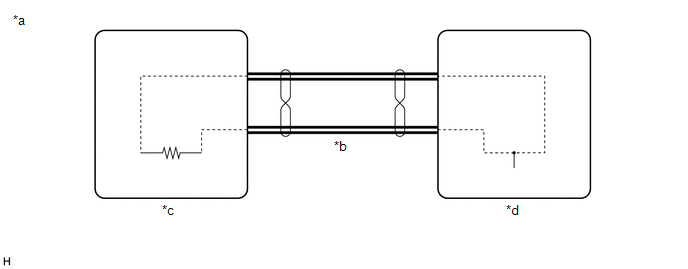
(1) Components of the audio and visual system communicate with each other via the local bus. (2) The local bus uses a twisted pair of wires for its communication lines. (3) The master unit of the local bus is the radio and display receiver assembly. HINT:
(b) AVC-LAN Outline (for 14 Speakers) 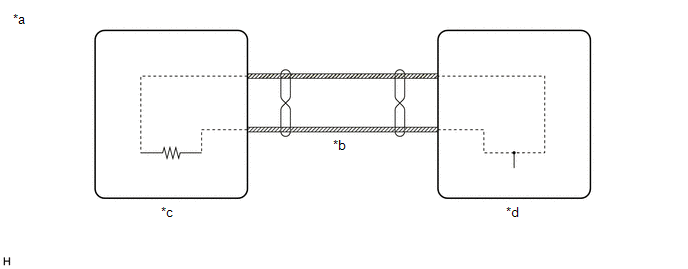
(1) Components of the audio and visual system communicate with each other via AVC-LAN communication. (2) The AVC-LAN uses a twisted pair of wires for its communication lines. (3) The master unit of the AVC-LAN is the radio and display receiver assembly. HINT:
(c) CAN Communication Outline (1) The audio and visual system uses CAN communication between the radio and display receiver assembly and ECUs. DIAGNOSTIC FUNCTION OUTLINE (a) The audio and visual system has a diagnostic function (the result is indicated on the master unit). | |||||||||||||||||||||||||||||||||||||||||||||||||||||||||||||||||||||||||||||||||||||||||||||||||||||||||||||||||||||||||||||||||||||||
Toyota Avalon (XX50) 2019-2022 Service & Repair Manual > Sfi System: Exhaust Gas Recirculation "A" Circuit Current Below Threshold (P040318,P040319,P140018,P140019)
DESCRIPTION Refer to DTC P04019C. Click here DTC No. Detection Item DTC Detection Condition Trouble Area MIL Memory Note P040318 Exhaust Gas Recirculation "A" Circuit Current Below Threshold Open or short in EGR A circuit for 1 second or more (1 trip detection logic). Open or short in EGR valve asse ...